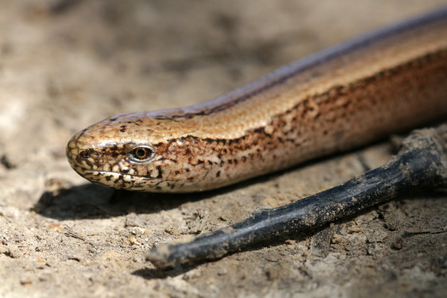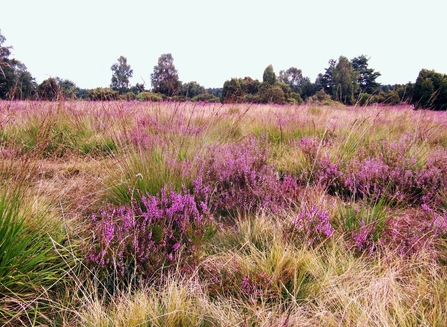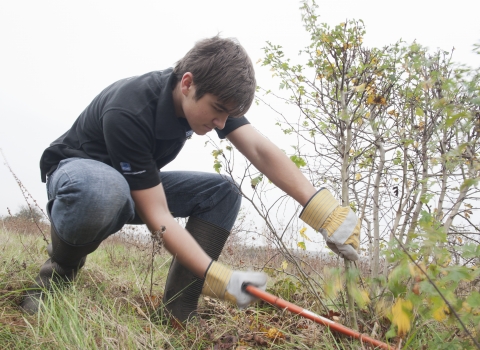What are heathlands
One of our most wild-seeming landscapes, heathland has actually been shaped by human actions. It began at least 5000 years ago, when humans started clearing trees growing on infertile soils, probably to entice game into clearings to make hunting easier. Later they used it to graze livestock. In some areas, layers of charcoal show that the forest was cleared repeatedly by fire for grazing or crops. Most heathlands are thought to date from the Bronze Age some 3000 years ago.
Watch the video below to see what heathland restoration work we are doing in Staffordshire to help in the fight against climate change.
A natural solution to the climate crisis
Ancient unploughed heathland soils are great at locking in carbon, and by linking up habitats and restoring more conifer plantations to heathland, much more carbon can be sequestered.
Heathlands need to managed with consideration and careful planning as they often support specialist species. Ground nesting birds and a range of reptiles like to call heathlands home.

Jim Higham
Around 85% of heathland has been lost over the past 150 years
Threats and pressures
The decline in the value of heathland to the local economy led to its fragmentation and conversion to other uses. Around 85% of heathland has been lost over the past 150 years through agricultural development and the planting of conifers.
The small, fragmented patches that remained fell out of use and natural succession led to the development of secondary woodland, resulting in the loss of many specialist heathland species
Since then, conservation programmes have sought to reverse the decline of heathlands through management and restoration. Today heathlands are no longer seen simply as wasteland and are valued for their wildlife and cultural history.

Conservation and recovery
In recent decades, conservation efforts have done much to reverse the fortunes of heathland. The loss has been halted and restoration projects have increased the area of heathland. Livestock grazing is once again a common sight on larger heathlands, and focussed management seeks to bring many heathland rarities back from the brink of extinction. However, the challenge of how to restore relationships between heathland and local communities remains.

Credit: Paul Harris/2020VISION
What heathland restoration work have we been doing in Staffordshire?
Gentleshaw Common is one of the largest areas of lowland heath in Staffordshire. The Trust have been restoring the heathland on site by clearing out bracken and scrub to make sure healthland plants such as heather, can spread and thrive as they are great for insects and healthy heathland is vital for climate mitigation.
Let nature help
Find out more about our the other Nature based solutions work the Trust are doing in Staffordshire and how it is helping to fight climate change
